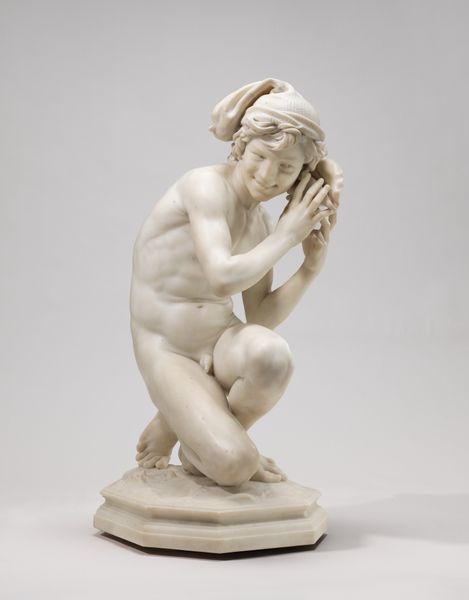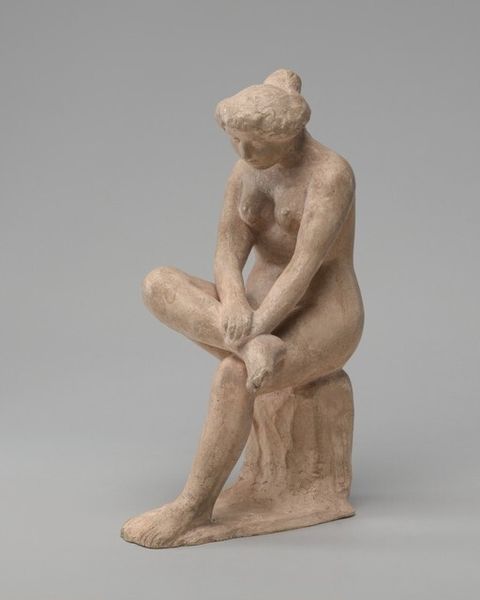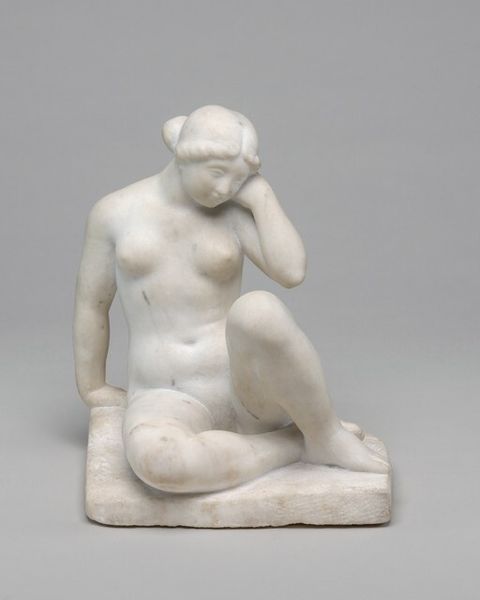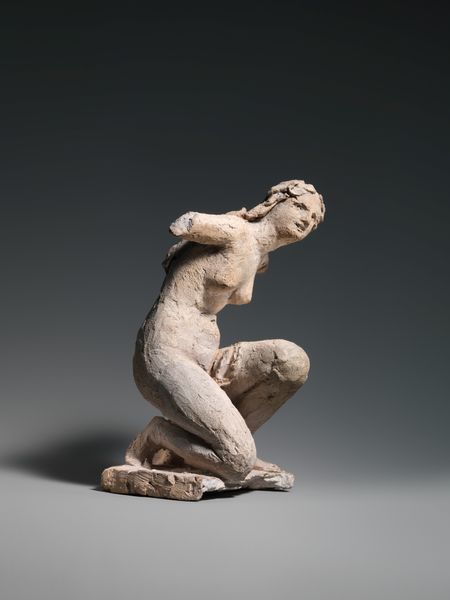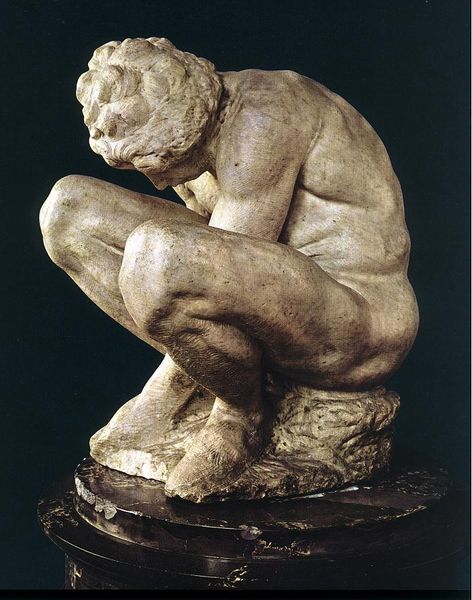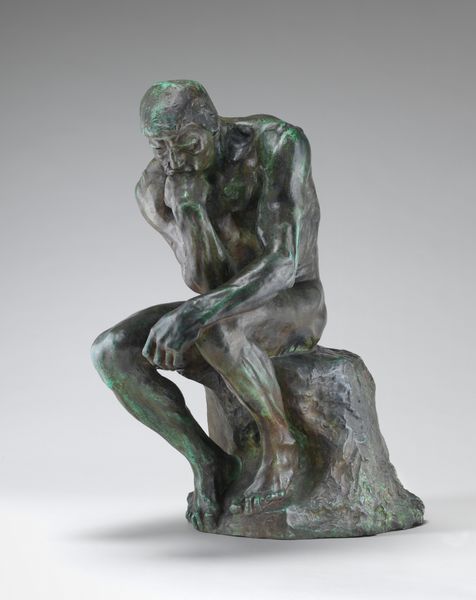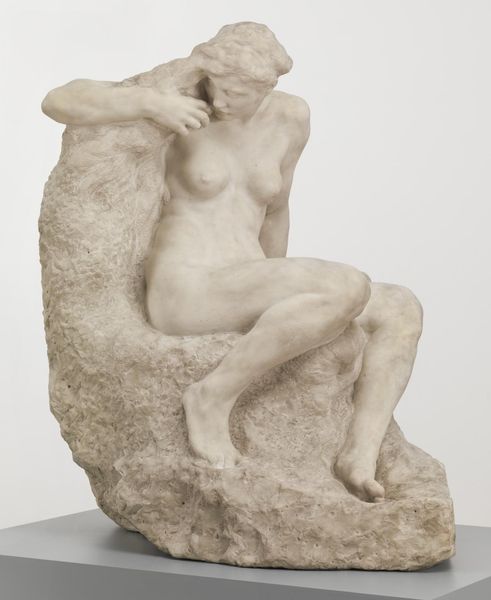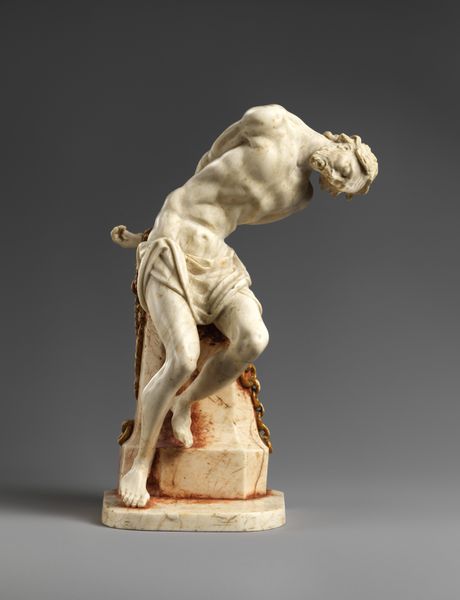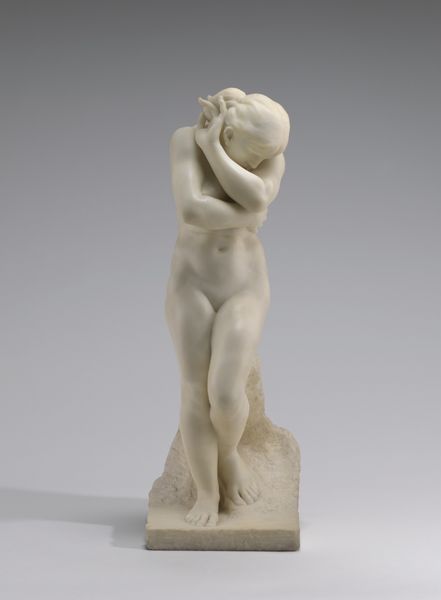
sculpture
#
portrait
#
statue
#
sculpture
#
figuration
#
sculpture
#
expressionism
Dimensions: overall: 103.2 x 76.2 x 115.5 cm (40 5/8 x 30 x 45 1/2 in.)
Copyright: National Gallery of Art: CC0 1.0
Editor: This is "Seated Youth," a 1917 sculpture by Wilhelm Lehmbruck. It's incredibly striking... the pose seems so burdened and introverted. What strikes you most about this piece? Curator: Considering it was made during World War One, the figure's posture speaks volumes about the social mood. Its stooped shoulders and lowered head convey the widespread disillusionment of the era, wouldn't you agree? Editor: I definitely see the sense of despair, but how much of that is intentional and how much is simply reflecting the atmosphere? Curator: It's both, I think. Lehmbruck was actively engaging with the psychological impact of the war. The elongation of the figure and the almost ghostly pallor, likely intentional choices, amplify the feelings of loss and alienation felt by so many. Does the setting affect your understanding? Where do you think this statue was designed to be placed and for what purpose? Editor: I'd initially imagined a small, intimate space, something like a private study or even a gravesite. Did its location change the public's experience? Curator: Absolutely. If displayed prominently in a public space, as was often the case, it becomes a potent symbol of national mourning and collective trauma. A figure designed to be seen. It then shifts from personal grief to a shared sense of loss and maybe even resentment to how such loss occurred. Editor: I hadn’t considered that shift from individual sorrow to collective commentary, which has changed my view. Thanks. Curator: And I learned from our discussion a reminder that every work’s public persona has a before, during, and after. Thanks for your perspective.
Comments
No comments
Be the first to comment and join the conversation on the ultimate creative platform.
